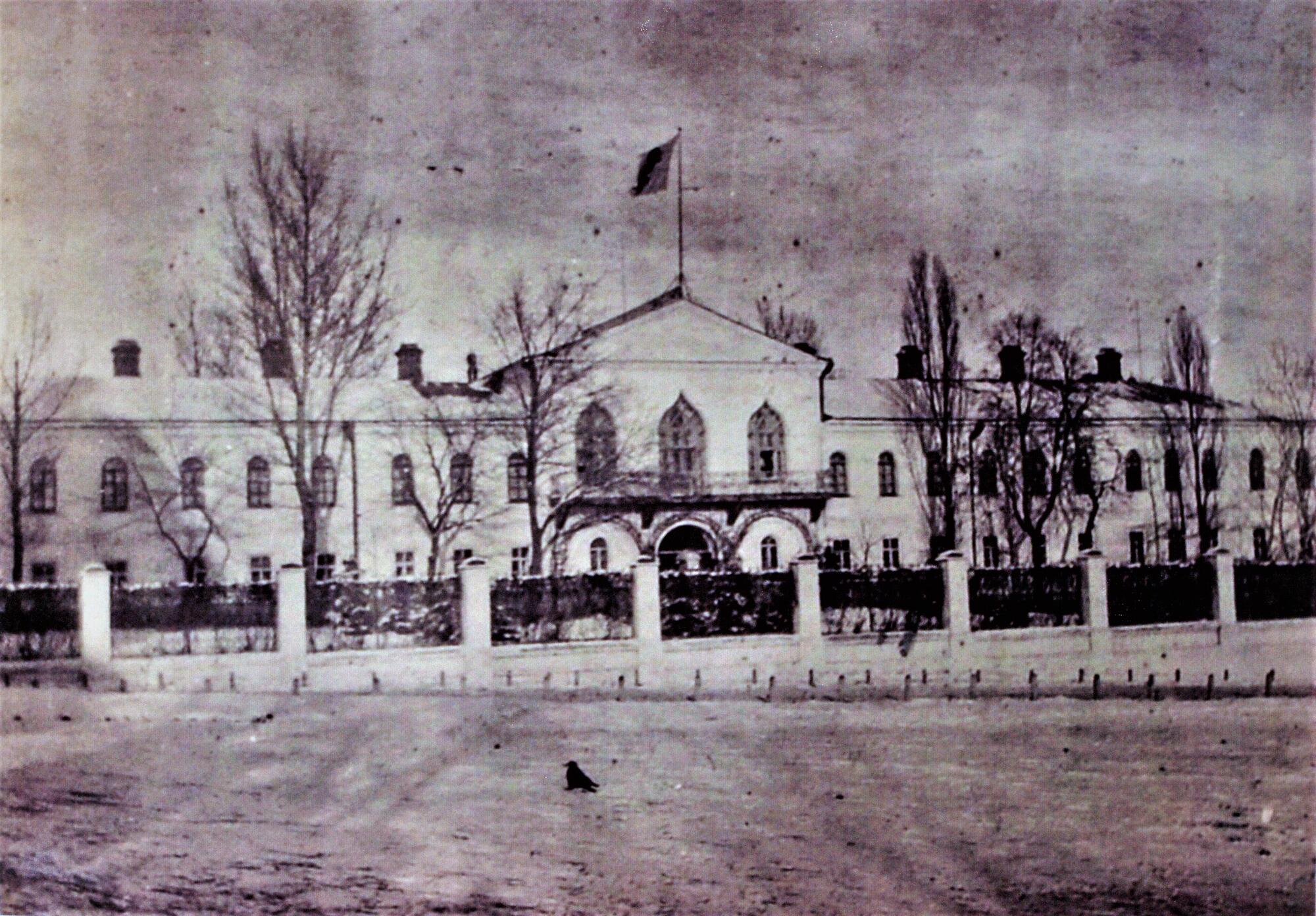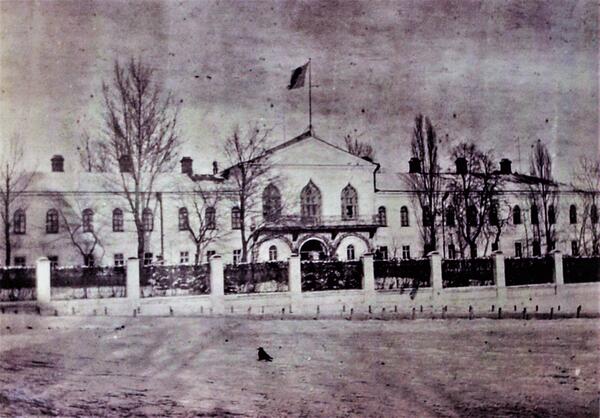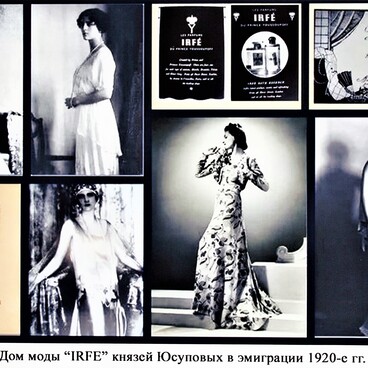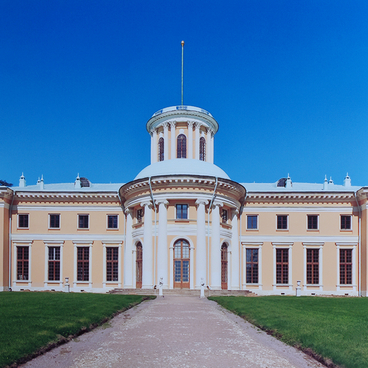In the early 19th century, the Yusupovs built a mansion in Rakitnoye with a library and a billiard room. Musical instruments, paintings and works of arts and crafts from the Yusupovs’ collection were kept in the building. Next to it wooden houses for employees were built, “bread shops” and “material stores”, as well as a large room, which was called the “barrack” — the building served as a dormitory for the house-serfs.
The lord’s house has not survived to this day. In 1840, Prince Boris Yusupov started to build a new manor house in its place. The construction was done by serfs of the prince, the construction took 6 years.
In the architecture of the palace, there are elements of classicism, baroque and traditional Russian architecture. Talented architects from the capital worked on the project, and some of the drawings for the palace were made by the famous Italian architect Giacomo Florenti.
The main facade of the building faces south, where previously was the entrance to the settlement from Belgorod. The two-story building on the plan resembles letter “P” (“П”). Its central part is higher than the side wings, it is completed with triangular gables on the north and south facades.
The enfilade and hall layout of the palace has now been changed to a corridor and hall layout. The main entrance to the palace is located in the northern part of the house. Next to the palace, there are two one-story outbuildings from the 19th century. One of them has an entrance to a large cellar. Not far from the palace on the river Rakitna, there is a cascade of ponds with a park on both banks, which was founded in the 19th century.
In the center of Rakitnoye village, there is a doctor’s house, a priest’s house, a parochial school, a hospital, a workers’ dwelling house, and machine shops, which were there during Yusupov’s time.
After the October Revolution, the Yusupov estate was nationalized. In 1932 — 1934, in the Yusupov Palace, there was a cultural center under the name “People’s House”, in the evenings, brass band played on the balcony, and a library was opened. In 1936, the Yusupov Palace was transformed as a secondary school, then for a long time it housed an auxiliary boarding school. In 2015, the Cultural and Historical Center of Yusupov Princes and the Rakityansky Museum of Local History were opened within the walls of the estate.
The lord’s house has not survived to this day. In 1840, Prince Boris Yusupov started to build a new manor house in its place. The construction was done by serfs of the prince, the construction took 6 years.
In the architecture of the palace, there are elements of classicism, baroque and traditional Russian architecture. Talented architects from the capital worked on the project, and some of the drawings for the palace were made by the famous Italian architect Giacomo Florenti.
The main facade of the building faces south, where previously was the entrance to the settlement from Belgorod. The two-story building on the plan resembles letter “P” (“П”). Its central part is higher than the side wings, it is completed with triangular gables on the north and south facades.
The enfilade and hall layout of the palace has now been changed to a corridor and hall layout. The main entrance to the palace is located in the northern part of the house. Next to the palace, there are two one-story outbuildings from the 19th century. One of them has an entrance to a large cellar. Not far from the palace on the river Rakitna, there is a cascade of ponds with a park on both banks, which was founded in the 19th century.
In the center of Rakitnoye village, there is a doctor’s house, a priest’s house, a parochial school, a hospital, a workers’ dwelling house, and machine shops, which were there during Yusupov’s time.
After the October Revolution, the Yusupov estate was nationalized. In 1932 — 1934, in the Yusupov Palace, there was a cultural center under the name “People’s House”, in the evenings, brass band played on the balcony, and a library was opened. In 1936, the Yusupov Palace was transformed as a secondary school, then for a long time it housed an auxiliary boarding school. In 2015, the Cultural and Historical Center of Yusupov Princes and the Rakityansky Museum of Local History were opened within the walls of the estate.



